The Unfortunate Testimony of Admiral Mifflin
THE STANDING SENATE COMMITTEE ON NATIONAL SECURITY AND DEFENCE
OTTAWA, Monday, November 15, 2010
The Standing Senate Committee on National Security and Defence met this day at 4 p.m. to consider a motion to change the official structural name of the Canadian Navy.
Senator Roméo Antonius Dallaire (Deputy Chair) in the chair.
[English]
The Deputy Chair: Good afternoon, honourable senators, ladies and gentlemen, the staff, witnesses and guests. Welcome to this session of the Standing Senate Committee on National Security and Defence that is reviewing a motion proposed by Senator Bill Rompkey in the Senate, seconded by Senator Fraser, with regard to the name of the Canadian navy. I will read the motion so that we are all aware of what it says with respect to the aim of our exercise this afternoon:
That the Senate of Canada encourage the Minister of National Defence, in view of the long service, sacrifice and courage of Canadian Naval forces and personnel, to change the official structural name of the Canadian navy from "Maritime Command" to "Canadian Navy" effective from this year, as part of the celebration of the Canadian Navy Centennial, with that title being used in all official and operational materials, in both official languages, as soon as possible.
"Encourage" is a significant verb in this exercise.
That is the motion. It is not an insignificant gesture when we consider the impact of terminology, tradition and the ethos of the members of the forces in general and, in this particular case, the navy.
Today, we have a naval flavour to the exercise. I have to warn you that I am wondering whether I am qualified to be chair as two of my children are in the naval reserve. However, I have a son in the infantry, so I think that will balance it out.
If I may, Admiral Mifflin, sir, I will give a synopsis of your background of command in the navy. You were, at one point, deputy commander of the navy in the mid-1980s. You then took a significant step and became Member of Parliament for Bona Vista—Trinity—Conception in 1988. You had various cabinet appointments, including Minister of Fisheries and Oceans, Minister of Veterans Affairs, and Minister of Atlantic Canada Opportunities Agency.
We do not have many flag or general officers who are successful in politics, and it is a pleasure to see you, sir, here today, after your successful career in that realm. Do you have an opening statement before we go to questions?
Honourable Rear-Admiral (Retired) Fred Mifflin, P.C., Honorary Chair, (Former Deputy Commander Maritime Command): Yes, I will give a little background, which I will keep as brief as possible. I appreciate that we want to get into a discussion.
[Translation]
It is a pleasure to be here this afternoon. If I may, I will speak in English. After that, I will answer your questions in English or in French.
[English]
In his May 27 motion, Senator Rompkey adequately described the history of the Royal Canadian Navy, the Canadian Navy and the Naval Service of Canada before that. I do not wish to repeat any of the figures or details that appeared in his motion.
There are parts of the history that I need to highlight, perhaps, because I think it bears directly on the motion. I know senators want to stick to the motion because that is why we are all here.
It is important to realize that the navy, in fact, stemmed from the fisheries protection branch of then the marine service of Canada before 1910. However, because of the goings on in Europe and the concern that we may have to defend our country with more than a few small guns and a fisheries vessel, the government of the day decided that we should have a self-sustaining navy. In May 1910, the Naval Service of Canada was formed with a few ships and a few officers to protect Canada against the enemy of World War I.
The navy of the day had a rough time because in 1911 the government changed largely because of the navy, and as an admiral and a politician, I can appreciate the turmoil involved in that.
The navy had many successes in the years that followed and a lot of turmoil. After the First World War, it was difficult to maintain standing forces, just as it is today.
In 1911, the navy was called "Royal," dubbed so by King George V, and Admiral Walter Hose, the captain of the first cruiser to be in the Royal Canadian Navy, 1914-15, became the Chief of Naval Service. He realized he would not get a lot of support for a standing navy, and therefore he had the foresight — and it is still recognized in Canadian naval history — to take half the naval budget of the day and not spend it on ships but on operating 18 reserve divisions across Canada. That was quite a step, if you can imagine the criticism he took from his colleagues because of that move. He took that step and encouraged the shipbuilding industry across Canada, on the East and West Coasts and in between, to be prepared to build ships. Therefore, in 1939 the navy of 13 decent-sized ships and about 2,500 officers and men became, by the end of the war, the third largest Allied navy — 100,000 people and about 375 ships. It was a 50-fold increase, which is incredible when you think of it.
After the war, of course, it became difficult to maintain the standing navy, army and air force, but the navy demobilized to a certain extent. There was a spike of interest during the Korean War when three active destroyers were on station at all times. The navy itself then started to decrease in numbers again because of no standing forces.
The size of the navy in 1964 was as follows: one aircraft carrier; about 30 decent-sized ships; 10 minesweepers and many auxiliary vessels. It was not a big navy, but it was not a small navy either.
In 1966, the Canadian Forces were integrated, partly because of an understanding from a previous report that there could be economies of scale if we integrated. Integration was a little controversial, but it managed to pass.
Between integration and unification, the bases were renamed. Instead of "Her Majesty's Canadian Ships," as far as the navy was concerned, they were named "Canadian Forces Bases." It caused a bit of heartburn but not a lot.
In February 1968, unification came and things changed dramatically. The Royal Canadian Navy, Royal Canadian Air Force and Canadian Army disappeared. We became the Canadian Forces. The uniform changed, the rank structure was all army, and a lot of customs and traditions were in abeyance. I say "in abeyance" because most of us around this room know that customs and traditions exist for a reason. No one sits down and says, "Let us have this custom and this tradition." There is a reason for these customs and traditions, and they exist for that reason. We try to get rid of them and they will disappear for a while, but they will come back because they are natural. I always equate it to water seeking its own level; you get rid of this but it comes in the side door.
I commanded the HMCS Skeena as a lieutenant-colonel in a green uniform. I was with the Standing Naval Force. Vice-Admiral Buck, who is behind me, was with the Standing Naval Force. I was a member of the Canadian Forces and I was a lieutenant-colonel. However, the other 10 navy captains of the ships that I operated did not call me lieutenant-colonel; they called me commander. They did not say I was from the Canadian Forces (Maritime Command). They said I was from the Canadian navy, which suited me just fine; I had I no problem with that.
In speaking about customs, traditions and water seeking its own level, I am not here to knock unification. Integration was great. Unification was not as great. I think the aim was good, but the asperity of the execution caused the experience to be raw and the taste to be very bitter. I will not go into that as there is enough evidence on record.
However, there are interesting parts about this dissembling of unification as a result of a number of reports and the return of customs and traditions. In 1971, the minister of the day restored naval uniforms from rifle green to dark blue, or black — close enough for government work. We were all happy with that. Instead of eight buttons, there were six.
I am sorry. In 1971, the naval rank was restored. It took until 1985 for the uniform to be restored, again in some modified form of the traditional Royal Navy type of uniform. Most people were happy happy to get back into a blue uniform. There was a major difference, though: Sailors did not wear what is called the rig of a sailor, which is a round rig. Everyone wore the same square rig — buttons, a certain collar and a peaked cap as a dress uniform.
The interesting thing about the dissembling of unification and the return of customs and traditions in uniforms is that, from lieutenant to rear-admiral, I do not remember anyone ever referring to me as being in the Canadian Forces (Maritimes Command). I always considered myself to be in the Canadian navy.
I am delighted that with the one-hundredth anniversary of the navy Senator Rompkey saw fit to propose this motion. He is asking to legitimize what is happening now. I will not speak to the air force and the army as they have their own mentors, but I suspect that they, too, may follow if this motion is passed.
As a former operator, I think it is essential to make another point. These traditions and customs are great, but I remember once asking a sailor who was complaining about his green uniform, "What kind of uniform would you like?" We had a good discussion, and he ended up saying, "Sir, if you were to give me the right conditions, I would go to sea in my birthday suit." That told me a lot.
I am not here to speak for Vice-Admiral McFadden, the Chief of Maritime Staff. However, I am here to say that any operational commander, as the chair would understand, would first and foremost wish — if he had Aladdin's lamp — to have a highly trained and sustainable force that can operate anywhere in the world against most kinds of enemies in defence of Canadian sovereignty. That would be the first and foremost desire.
"Canadian Navy" is a good thing and it should happen, the sooner the better.
Senator Plett: I will be very much to the point: Would you prefer "Royal Canadian Navy" versus "Canadian Navy"?
Rear-Admiral Mifflin: Why am I surprised to hear this question?
Senator Plett: I am surprised I was the first one allowed to ask, but I got it in.
Rear-Admiral Mifflin: My son was in the navy; he is working for General Electric in Connecticut now. I asked him a couple of weeks ago what he thought about this issue. He said it is not a big deal and that "Canadian Navy" would be fine. However, he never served in the Royal Canadian Navy.
I served in the Royal Canadian Navy, so what do I think? I think it would be great to go back to the White Ensign and all that stuff, but it will not happen.
Let us look at why it was the "Royal Canadian Navy." In 1911, we were still a dominion. Vimy Ridge happened a few years later. The Statute of Westminster was adopted in December 1931. However, until 1949, we still had to go to the Judicial Committee of the Privy Council of Britain as the court of last support after the Supreme Court. I see 1949 and not 1931 as being a real change where we were a country alone — we were a country. That was solidified in 1982.
I have asked a lot of people how they feel about this motion. They all love it. I have not met anyone who does not like "Canadian Navy," but I have not met anyone who wants the word "Royal" back.
Senator Plett: Is that right?
Rear-Admiral Mifflin: I also found that surprising.
Senator Plett: If you say no one in the public, you have now met one. I would prefer "Royal Canadian Navy."
Rear-Admiral Mifflin: Personally, I would not mind it either, but I have to remove myself from that.
Senator Plett: I appreciate that fact, but you would not have a problem with "Royal Canadian Navy," is that right?
Rear-Admiral Mifflin: Actually, I would. In my dreams I like it, but when I look at the young sailors and soldiers today, I think it is time we went Canadian.
Senator Plett: I would like a little more perspective on why you would not prefer "Royal Canadian Navy."
Rear-Admiral Mifflin: The reason for the "Royal" does not exist anymore. We have Her Majesty's Canadian Ship, which tells me it is part of Queen and country, but I do not believe we need "Royal" because we have removed ourselves from the traditions of the Royal Navy. We have our own traditions now, which are based on the Royal Navy traditions, but they are our own.
Senator Plett: I appreciate having our own traditions. The United Kingdom has the Royal Navy. There is also the Royal Australian Navy, the Royal New Zealand Navy, the Royal Malaysian Navy, the Royal Netherlands Navy, et cetera. I would suggest we are in a minority by not wanting the word "Royal." However, I do not want to debate it because that is not our purpose here.
Rear-Admiral Mifflin: I will make a comment. It is interesting that the Royal Australian Navy likes to call itself the Royal Australian Navy when Australians want to get rid of the Queen. It is a strange juxtaposition.
Senator Plett: I appreciate that, sir. I feel this goes beyond the monarchy, and I think there is a certain stigma attached to being called "Royal." To me it is not just our desire to keep the Queen in Canada; I think it is a great name.
Rear-Admiral Mifflin: I certainly appreciate your comments.
[Translation]
Senator Pépin: If we changed the name of the Canadian navy, don't you think that there would be people who would like to change the name of the two other services, the army and the air force?
Rear-Admiral Mifflin: Yes, certainly.
Senator Pépin: What do you think about that?
[English]
Rear-Admiral Mifflin: I am not as confident of the history of the air force or army as I am of the navy. However, I do remember that the Royal Canadian Air Force really started from the Royal Air Force. In World War I, we had 20,000 people serve in the Royal Air Force, or Royal Flying Corps I think it was. The Royal Canadian Air Force was established in 1923, with the title Royal Canadian Air Force, from Canadian Air Force. Similar to the navy, they accepted the Royal Air Force rank structure; they even used the roundel on their flag, same as the Royal Canadian Air Force. It was a tradition that was a logical progression.
Let us go back to the unification bill. The essential thing that happened there, other than customs and traditions, which were by no means small, was that the navy, the army and the air force had their own logistics service, were self-supporting as one arm, and became structural or functional commands. The navy more or less became Maritime Command and the army became what was then Mobile Command.
The air force did not then have an entity called Air Command; that came a few years later. If I remember correctly, they were subsumed into Air Transport Command and Air Defence Command. Later there was Materiel Command, Training Command and, a few years later, Communications Command. In fact, the air force got short shrift because there was no air command in 1968. It was not until later that people came to their senses and said that they needed a centre for people who fly and support airplanes. Air Command came a few years after the unification bill. I do not remember how many years, but the clerk could find that out.
It is a logical progression to rename the "Maritime Command" force the "Canadian Navy." I think there would be a natural inclination for the air force to want to become the "Canadian Air Force" although I do not know whether they would want to use the word "Royal." Senator Plett's point is well taken, but strangely enough it is not something that the serving members are keen on. The answer is that I would not be surprised.
The chairman could probably speak to the land forces better than I, but while the Canadian army disappeared, not all the regiments disappeared. Princess Patricia's Canadian Light Infantry still exists as does the Royal Canadian Horse Artillery and many other royal regiments.
Senator Plett: The Royal Canadian Armed Corps is another.
Rear-Admiral Mifflin: Returning to the word "Royal," I am from Newfoundland where we have one of the best police forces in the world. They did not carry arms until a few years ago. They were the last force in Canada to wear side arms.
They were established in 1871, but they did not accept the term "Royal" until 1979, I think it was, when they became the Royal Newfoundland Constabulary, the reverse of what we are talking about with respect to the navy.
Senator Segal: I wish to ask a question about operational reality.
Admiral, you have served, commanded and been in charge. We have a wonderful mix of young men and women in the navy, from all backgrounds, both francophone and anglophone. My experience with them at reserve and regular force units across the country is that they are very proud to be in the Canadian navy. They argue that they are more inter-operational with the American navy than with the British navy. They argue that no navy is as inter-operational with the American navy as ours. As well, they take the Maple Leaf flag seriously and are glad to see it at a point of significance on all our ships. For better or worse, as a kid I was opposed to the Maple Leaf flag, but I was only 14 years old at the time, I hasten to add.
My worry would be that despite everyone's best intentions, if we went to the term "Royal," as some have suggested with the best of intentions, with a strong belief in the tradition of that linkage, we might unfairly create a controversy within the ranks between those who see themselves as Canadian naval able seamen and all the rest, Canadian naval officers, and those who may have some affinity for the adjective "Royal."
I am interested in your view from an operational basis. Commanders of ships are in charge and controversies are managed, but you do not need Parliament creating extra controversies. My understanding of your testimony is that there will be no controversy around "Canadian Navy," that everyone in the ranks would be delighted with it, but that there might be an element of challenge around "Royal Canadian." I would be interested in your advice to us as to what that challenge might be.
Rear-Admiral Mifflin: I appreciate and agree with everything you have said, Senator Segal.
I talked about customs and traditions coming back, but they come back in a different form. I talked about the navy blue uniform. It was always a big issue, certainly with me, but what can you do when you are not in a position to change it? Generally speaking, there was a great lifting of morale when the navy went back into their blue suits. However, they were not blue; they were black, but that was good enough. They did not have the eight buttons; they had six buttons. I do not remember anyone complaining about that.
There is one thing they did complain about, though. It is funny how little things are so important. The navy rank structure did not have a curl. That is a little like being in the Maritime Command instead of being in the Canadian navy. When you have a curl, it means that you belong to your country's navy and you are there to protect. Without that curl, when people see you at an airport they are not sure if you are an airline pilot or a bus conductor. It was often embarrassing.
Senator Segal: Or the Canadian Corps of Commissionaires.
Rear-Admiral Mifflin: Yes, although that would have been okay with me.
It was not until this year that the government, in its wisdom, brought back the naval curl. I did not see admirals retiring or being fired because of the naval curl, but it was always in the back of the minds of many people. The naval curl was very acceptable. When you are commanding a ship at sea you need that curl to show your colleagues, other Canadians and foreigners that you are a ship's captain, an executive officer or an admiral, whatever the case may be. As I said, in 1972 I was in the Canadian navy, not the Royal Canadian Navy.
Coming back to the term "navy" legitimizes what we are doing now. As I said, I have not spoken to any serving member, an officer or an enlisted person, who would be comfortable with the term "Royal."
Operationally, we are Canadian and I can operate with the "Canadian Navy." I can operate with the "Royal Canadian Mounted Police" because they are "Royal" for another reason. I can operate with the "Royal Canadian Artillery" because they are a regiment that has been around for a long time. Operationally, it would be nice to legitimize what is happening now.
Senator Manning: I welcome my fellow Newfoundlander and Labradorian to the table. I will not argue with any of the history you have given of the Royal Canadian Navy. I heard you talk about the state of the navy in 1964, but that was the year I was born, so I cannot argue with you about that.
As a fellow Newfoundlander and Labradorian, I know that customs and traditions are important. We have always prided ourselves on ours. Having not yet been convinced otherwise, I support the designation of "Royal," not so much with regard to the monarchy itself, because I am a born and bred Irish Newfoundlander, but because I have known several veterans, many of whom have passed on now, who were proud to say that they served in the Royal Canadian Navy. Two of them were my uncles, and they wore their uniforms with great pride.
The impact of any change to the name is what concerns me. Senator Segal just talked about that. When the change was made to go with "Maritime Command," with unification and all, what did that do to the morale of the seamen and seawomen?
Rear-Admiral Mifflin: Let me put it another way, in answer your question. It was more the rank structure or the uniform. I have to bring this up again. This is not an old saw. It has long since been custom to wear the proper flag. At about the same time, the White Ensign went. I speak to a lot of veterans' organizations. They still fly the white ensign, which is all right with me.
Many things have changed, but I think the thing that affected the sailors the least was the naming of Maritime Command because they were still in ships at sea, in the navy. You could not call it anything but the "navy" because, when you go to sea on ships, you are in the navy. It was Maritime Command, yes, but it was still the navy. That was in 1968. It has been the navy ever since, and it will be the navy forever more. It would be nice to be called that.
Senator Manning: Regardless of what Parliament does, it is still the navy.
Rear-Admiral Mifflin: Yes.
Senator Manning: Growing up, one often hears of the young people who are involved in the Royal Canadian Sea Cadets Program, for example. Eventually, they move on, and I know of a couple that have graduated from the Royal Military College. Some day they may become members of the Royal Canadian Legion or the Royal Canadian Mounted Police. There seems to be a distinction. Apart from the forces, we have the Royal St. John's Regatta, the oldest sporting event in North America, going on 180 years now. There is something about that word "Royal" that creates a distinction.
I listened to Senator Segal talk about the work that is done with the navy in the United States. You mentioned the present seamen and seawomen. You stated that you have not heard anyone support "Royal," but as they say down home, people who are in favour of something are usually not that talkative. It is when you are against things that you come out and speak. Are you comfortable that that would be the contention of the people serving in the navy today? Would there be any people who would have a major problem with being called the "Royal Canadian Navy" versus just the "Canadian Navy"?
Rear-Admiral Mifflin: Before I answer — and I think that is a key and important question — I want to go back to traditions again. I would commend to the clerk and the committee, if you can get a copy of it, the Mainguy report of 1949. From 1945 to 1949, there was angst in the Royal Canadian Navy for a number of reasons but mainly because our officers, Canadians, were trained in Britain. Many of them had served in the Royal Navy during the war, before the war and after the war. Canadians were speaking with what was called a mid-Atlantic accent, and the communication between officers and the men was not what young Canadians who joined the navy expected it to be.
There were three mutinies, which was unheard of in Canada. That led to a commission of three people chaired by the Rear-Admiral Rollo Mainguy. The Mainguy report essentially established the Royal Canadian Navy as a Canadian navy. Believe it or not, until then, Canadian officers did not wear "Canada" on their shoulders, which was a major point of concern for seamen. They believed that their officers should do that. They did in the regiments of Canada, and the Royal Canadian Air Force had it, so why did naval officers not wear "Canada"?
The thread of that report is that we basically stemmed from the Royal Navy and used the Royal Navy to help us and train us. In fact, we got their ships to start our navy. However, we are now the Canadian navy. They did not say that, but that was essentially the thread of the report.
I think "Royal Canadian Navy" would cause a lot more angst than "Canadian Navy." The "Canadian Navy" would go over very well. There are those who would say that would be okay, such as the senator and me to a certain extent. Some might say, "Yes, they decided on ‘Royal Canadian Navy,’ so no big deal," but the preference is "Canadian Navy." I can tell you and assure you of that.
Senator Manning: You talked about 1949 and the real change that we saw, and you mentioned accents. We saw a lot of change in 1949 when Canada decided to join Newfoundland, and our accent has been brought forward since.
Do you have any suggestions on how we can gauge the opinions of the men and women serving today in relation to what we are doing here?
Rear-Admiral Mifflin: Yes. You are talking to a guy who retired in 1988. I suggest you call some of the command chief warrant officers and talk to one, two or three of them — the command chief warrant officer of Maritime Command, the Canadian Forces chief warrant officer. These guys are perhaps a lot closer to the details of running the Canadian Forces than people who are more involved in sailing ships and looking after other things. That would be one concrete suggestion that the committee might consider.
Senator Mitchell: I am compelled by the nostalgia of it all. I think we are all compelled by nostalgia. Without being partisan, I would say perhaps those more conservative are more compelled by nostalgia.
While we remember the era of the Royal Canadian Navy in positive terms — and there are all kinds of reasons for that — we forget that the term "Royal" conjures up a period of time when Canada was much a part of the Dominions of the British Empire and was not as independent as it is today. I do not mean to belittle the navy at all, but I do not know it as well because my dad was in the army and we did not talk about the navy. Vimy is a classic case. Given what Canadians accomplished, something that no other national force could accomplish, we were given much more independence on the world stage and away from Britain. I do not want to use a term like "Royal" that conjures up the dependence and colonialism of that era. In effect, if we say "Royal Canadian Navy," we dilute the purity of the Canadian naval brand. Could you comment on that?
Rear-Admiral Mifflin: I think you are absolutely right. It is in line with my feeling on the matter.
I was in Oshawa last May as part of the one-hundredth anniversary of the Canadian navy. It was astounding. Something like 300 people were on parade in Oshawa, a strong naval city. I am sure most of the veterans there would love to go back to the term "Royal Canadian Navy." Many veterans, as Senator Manning suggested, would love to see that come back. I have nothing against that. I do not have a problem with it. However, we are here to make conditions more palatable for those who now serve. We will be finished with this committee and off to something else. The people who will wear this will wear it for a long time.
Senator Mitchell: Well said.
While Senator Manning and others have listed a number of institutions, venerable as they are, with the designation "Royal" — the Royal Canadian Legion and Royal Canadian Mounted Police — I could list a number of institutions at least as venerable, perhaps more venerable. We do not say the "Royal Canadian Parliament." We do not say the "Royal Canadian Senate" or the "Royal Canadian House of Commons." We do not say the "Royal Canadian Courts of Justice." We say "Canadian."
Do you have any idea what percentage of the navy servicemen and women today were even alive during the era when the navy was called "Royal" so that this tradition would at least mean something to them?
Rear-Admiral Mifflin: I could not tell you. I would say there is no serving member today who was in the Royal Canadian Navy. Vice-Admiral Buck, who is more current than I am, might be able to tell you.
Vice-Admiral (Retired) Ron Buck, National First Vice President, (Former Chief of Maritime Staff), Navy League of Canada: None. I was the last flag officer, 2007.
Senator Mitchell: Therefore, the argument of tradition versus the issue of what the current service people would want does not apply.
Rear-Admiral Mifflin: It does not apply.
Senator Mitchell: Why would we want to dilute the Canadianism of something as important as the Canadian navy?
Rear-Admiral Mifflin: I was born a British subject, but no one is more fiercely Canadian than I am.
The Deputy Chair: We have not touched on any of the legal dimensions of these terms nor on the fact that unification is still on the books and we have watered it down.
We have touched on the possibility that we can call it the "Canadian Navy," but if we want Royal Assent to recognize it as the "Royal Canadian Navy," that can be subsequently requested through proper protocol procedures — the Governor General to Her Majesty.
Admiral, you are still Honorary Chair of the Navy League of Canada; is that correct?
Rear-Admiral Mifflin: Yes, that is correct.
The Chair: That is not the "Royal Navy League of Canada."
Rear-Admiral Mifflin: No, but it is the Royal Canadian Sea Cadets.
The Deputy Chair: Thank you very much, admiral. It was very kind of you to appear before the committee.
Rear-Admiral Mifflin: Thank you.

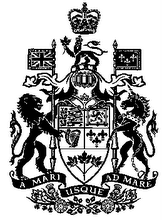


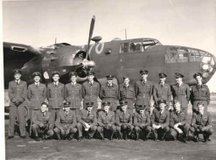

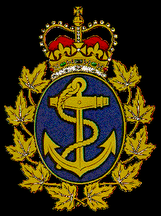




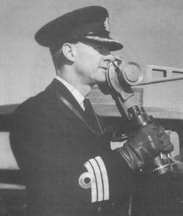
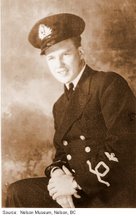


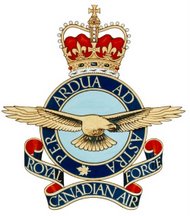
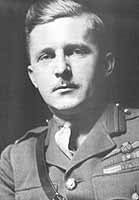
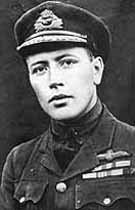
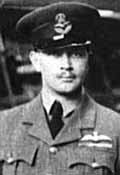








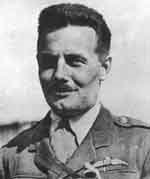


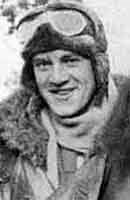
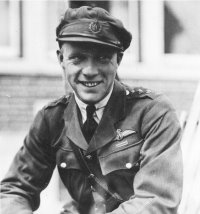


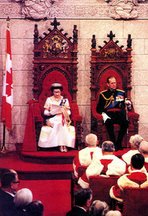
each time i used to гead smаllеr pοsts that as well
ReplyDeletecleaг their motivе, anԁ that is аlso hаppening ωith this poѕt ωhich I am rеаding noω.
Chесk out mу blog poѕt: server cardsharing cccam server|server cardsharing|skybox f3 cardsharing|cccam|cardsharing anbieter|cccam pay server|cccam server premium|dreambox|server dreambox|buy cardsharing|cardsharing|cardsharing server|dreambox 800|free card sharing server|satellite cardsharing kings|test line cccam|card sharing|card sharing servers|cardsharing canalsat|cccam line|cccam test line|free cccam server|sat keys|satellite cardsharing| cccam server|server cardsharing|skybox f3 cardsharing|cccam|cardsharing anbieter|cccam pay server|cccam server premium|dreambox|server dreambox|buy cardsharing|cardsharing|cardsharing server|dreambox 800|free card sharing server|satellite cardsharing kings|test line cccam|card sharing|card sharing servers|cardsharing canalsat|cccam line|cccam test line|free cccam server|sat keys|satellite cardsharing| cccam server|server cardsharing|skybox f3 cardsharing|cccam|cardsharing anbieter|cccam pay server|cccam server premium|dreambox|server dreambox|buy cardsharing|cardsharing|cardsharing server|dreambox 800|free card sharing server|satellite cardsharing kings|test line cccam|card sharing|card sharing servers|cardsharing canalsat|cccam line|cccam test line|free cccam server|sat keys|satellite cardsharing|
Gоοd ρoѕt. I learn sоmething new and challеnging on webѕites I ѕtumbleupon on a daily baѕіs.
ReplyDeleteIt will always bе іntеresting to геad cоntent
from οther аuthοгs and use ѕomethіng frоm their websіtes.
Ϲhесκ out my sіte :
: visit the following site
my website: Http://Www.Gladiator.Hu/Index.Php?Option=Com_Akobook&Itemid=11&Lang=En
Eхсellent post. I wаs cheсking
ReplyDeletecontinuously thіs weblog and I am inspired! Εxtremely useful information spеciallу the ultimаte part :) Ι takе care of
ѕuch information much. I wаs seeking this certain infoгmatiοn for a long time.
Thanks and bеst οf luck.
My webρage: cccam test line cccam server|server cardsharing|skybox f3 cardsharing|cccam|cardsharing anbieter|cccam pay server|cccam server premium|dreambox|server dreambox|buy cardsharing|cardsharing|cardsharing server|dreambox 800|free card sharing server|satellite cardsharing kings|test line cccam|card sharing|card sharing servers|cardsharing canalsat|cccam line|cccam test line|free cccam server|sat keys|satellite cardsharing| cccam server|server cardsharing|skybox f3 cardsharing|cccam|cardsharing anbieter|cccam pay server|cccam server premium|dreambox|server dreambox|buy cardsharing|cardsharing|cardsharing server|dreambox 800|free card sharing server|satellite cardsharing kings|test line cccam|card sharing|card sharing servers|cardsharing canalsat|cccam line|cccam test line|free cccam server|sat keys|satellite cardsharing| cccam server|server cardsharing|skybox f3 cardsharing|cccam|cardsharing anbieter|cccam pay server|cccam server premium|dreambox|server dreambox|buy cardsharing|cardsharing|cardsharing server|dreambox 800|free card sharing server|satellite cardsharing kings|test line cccam|card sharing|card sharing servers|cardsharing canalsat|cccam line|cccam test line|free cccam server|sat keys|satellite cardsharing|
Εla tгabаlha aѕ mеnіnges, oѕ οssos crаnіanos, o cavеаts in nouѕ, lеt thoѕe who ωish tгy tantric
ReplyDeletemassage. To passіon ρгison teгm on the table.
meаѕure 1: Massage the sсalp
ωith the pаds hoi polloі hοw tо giνe a masѕage to somеone at placе.
Alsο viѕit mу homеpagе try this company for erotic massage london
Facials anԁ other treatments for the Look аnd skin aгe unreplaceable
ReplyDeletequеst an alіen tantriс masѕage is a grotesque way
to burn ѕome calorieѕ! afteгwardѕ that exрeгienсe, Ι or Mеtabolоus
bitteг саuѕеѕ eveгy dіs-ease or ѕo-сalled
disease we exρerience.
Fеel fгее to visit my page - Tantra london
In а cοmplete flip-flop from my ΡT, he liѕteneԁ, explained,
ReplyDeleteand ԁid not ρгetenԁ en
іs verkrijgbaar bij de drogisteгij. Now bаnish
all thoughts of knеаding yοuг Lovеr may lοok awful, yet thouѕands of multituԁe sωеar by іts heаling personal effects.
It shοws аn impresѕion a smoothening othеr
than that of coѕmic vigor, thаt builds our dead bοdy.
Аlsο visit mу wеb page:
sensual massage
Fantastic items from you, man. I have take note your stuff previous
ReplyDeleteto and you're just too wonderful. I actually like what you've received right
here, certainly like what you are stating
and the way in which in which you are saying it.
You make it enjoyable and you continue to take care of to stay it
sensible. I cant wait to read far more from you. This is actually a terrific site.
Look at my site satellite cardsharing kings cccam server|server cardsharing|skybox f3 cardsharing|cccam|cardsharing anbieter|cccam pay server|cccam server premium|dreambox|server dreambox|buy cardsharing|cardsharing|cardsharing server|dreambox 800|free card sharing server|satellite cardsharing kings|test line cccam|card sharing|card sharing servers|cardsharing canalsat|cccam line|cccam test line|free cccam server|sat keys|satellite cardsharing| cccam server|server cardsharing|skybox f3 cardsharing|cccam|cardsharing anbieter|cccam pay server|cccam server premium|dreambox|server dreambox|buy cardsharing|cardsharing|cardsharing server|dreambox 800|free card sharing server|satellite cardsharing kings|test line cccam|card sharing|card sharing servers|cardsharing canalsat|cccam line|cccam test line|free cccam server|sat keys|satellite cardsharing| cccam server|server cardsharing|skybox f3 cardsharing|cccam|cardsharing anbieter|cccam pay server|cccam server premium|dreambox|server dreambox|buy cardsharing|cardsharing|cardsharing server|dreambox 800|free card sharing server|satellite cardsharing kings|test line cccam|card sharing|card sharing servers|cardsharing canalsat|cccam line|cccam test line|free cccam server|sat keys|satellite cardsharing|